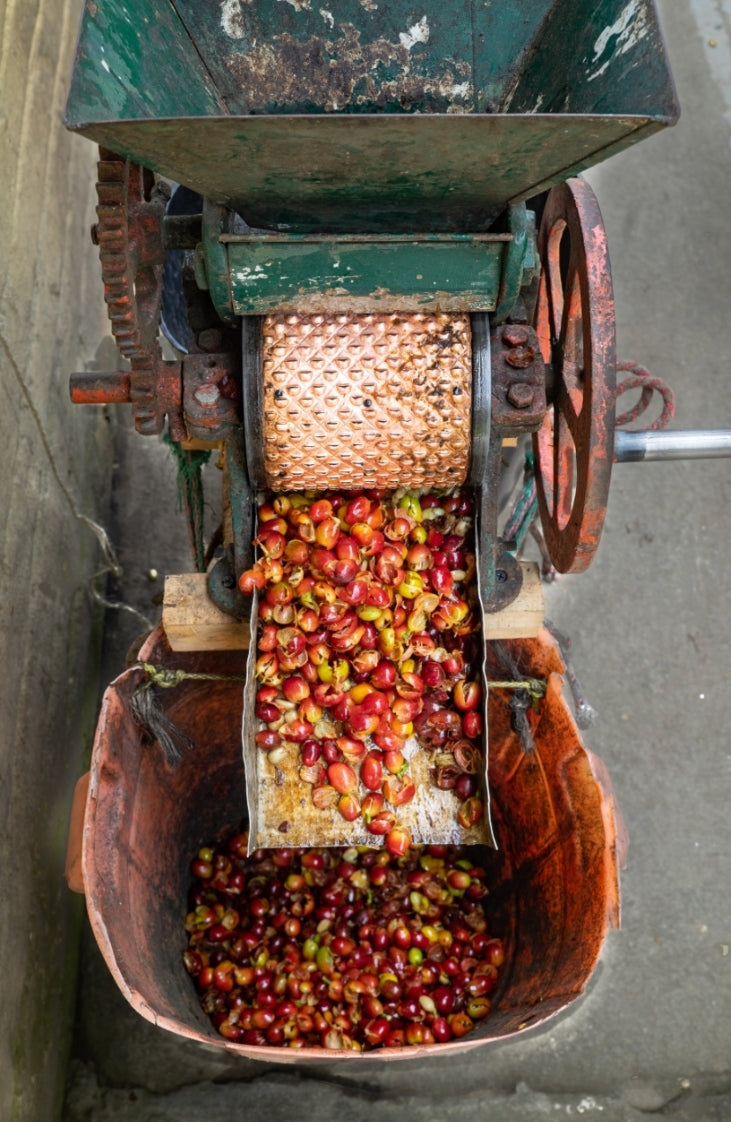
Coffee processing
Share
Before coffee is depulped and washed or unwashed (natural process), it goes through what is called a float test. Picked coffee is mixed with fresh water or filtered water to separate ripe from unripe coffee. The ripe coffee will sink to the bottom, and the unripe coffees float to the top. The ripe coffee may undergo a second test once the cherry is depulped. The unripe coffee is skimmed off of the top and will find its own use elsewhere. Skin and muceledge can be fermented into a beverage, though most used for composting.
The purpose of the depulping process is to ensure the skin and muceledge are removed from the coffee bean, leaving the coffee bean inside of the parchment. The machines do not remove the parchment, and do not allow beans that are too small to pass through the cylinder. If a producer chooses a washed method, it would be ideal to depulp the beans sooner than later to prevent fermentation of the bean. Fermentation is practiced, and can be debated for production purposes. It's all personal preference, however integrity is vital when it comes to the health of the coffee bean before it is exported.
Coffee that is depulped and washed may be credited for highest quality and highest asking price depending on the producer/farmer and their practices.